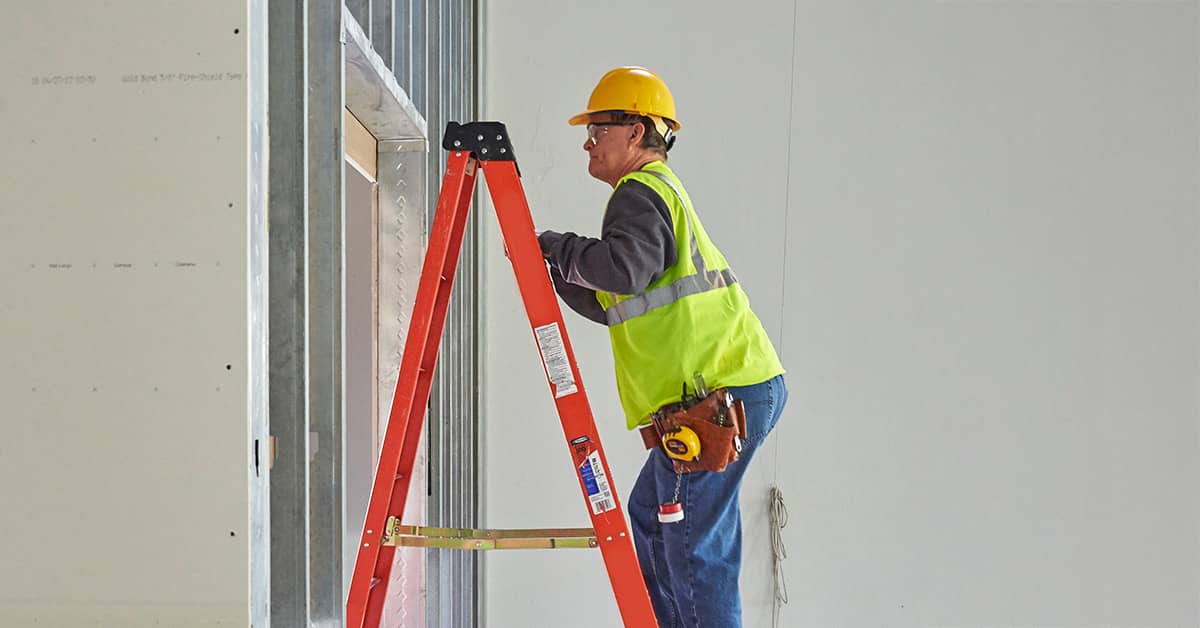Train workers to inspect, use, and store portable ladders
Date Posted: 04/10/2023

Before employees use portable ladders, employers must train them on properly inspecting, safely using, and appropriately storing those ladders.
Employees must inspect each ladder before the first use on each shift, and they need to recognize defects that would require removing the ladder from service. Employees may need to perform additional inspections if a ladder could have been damaged. For example, if a ladder falls off a roof or vehicle or gets struck by a vehicle, it must be inspected again.
Employers determine the scope of each inspection. Typically, pre-use inspections would include verifying that the footing is firm and stable, engaging spreader or locking devices to see if they work, and looking for any missing or damaged components.
Inspections after a tip-over might include looking for dents or bends in side rails and rungs, checking hardware connections, examining rivets for shearing, and checking the ladder footing.
Employees need training to properly inspect a ladder and identify any problems. OSHA doesn’t require documenting ladder inspections, but providing a checklist could ensure a thorough inspection and help demonstrate to OSHA that you require inspections.
Using ladders
Employees must use portable ladders properly. Although OSHA’s list in 1910.23 is not all-inclusive, it provides things like:
- Using ladders only for the designed purpose;
- Facing the ladder when climbing or descending;
- Grasping the ladder with at least one hand; and
- Using ladders only on stable and level surfaces unless secured or stabilized.
A letter of interpretation from 2019 clarified OSHA’s position that grasping the horizontal rungs is preferable, but OSHA recognized that circumstances may require employees to hold the side rails.
The regulation also recognizes that employees may need to use ladders on slippery surfaces, or may need to use them near doorways. In these cases, a ladder may need to be secured or guarded to protect the worker.
Proper storage
Portable ladders should be stored in a location that will not cause damage. Exposure to sunlight, water, heat, or chemicals could damage the ladder or make the surfaces slippery. Preventing damage helps ensure that ladders remain safe to use.
Manufacturers may recommend against hanging a ladder by the side rails because the rails are not designed to sustain stress in that direction. Also, the storage area should be away from vehicle or equipment traffic to minimize the risk of damage.
OSHA does not specifically prohibit simply leaning ladders against a wall, but securing them with ropes or straps is a best practice. A ladder that falls could get damaged, strike an employee, or create a hazard like blocking an aisle. In addition, the ladder manufacturer may recommend securing ladders in storage, and insurance companies may also require this.
Conclusion
Ladders appear simple and many employees use them at home, but according to the Bureau of Labor Statistics, more than 100 deaths each year result from employees using portable ladders, and more than 22,000 employees suffer injuries that require at least one day away from work. To help your workers protect themselves, train them to thoroughly inspect, safely use, and properly store portable ladders.
How Safety Management Suite Can Help
OSHA requires training under many regulations. Training usually must be provided by a qualified or competent person, and include hazards or issues specific to the workplace. However, building training programs takes a lot of effort. The Training area of the J. J. Keller® SAFETY MANAGEMENT SUITE provides classroom courses that you can modify to meet your needs, as well as online courses that enhance the training experience.
E-mail Newsletter
Sign up to receive the weekly EHS Insider email newsletter for safety articles, news headlines, regulatory alerts, industry events, webcasts, and more.